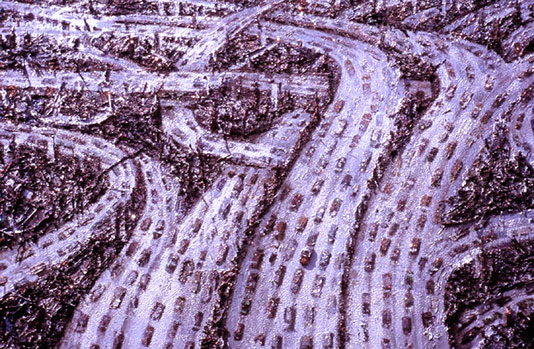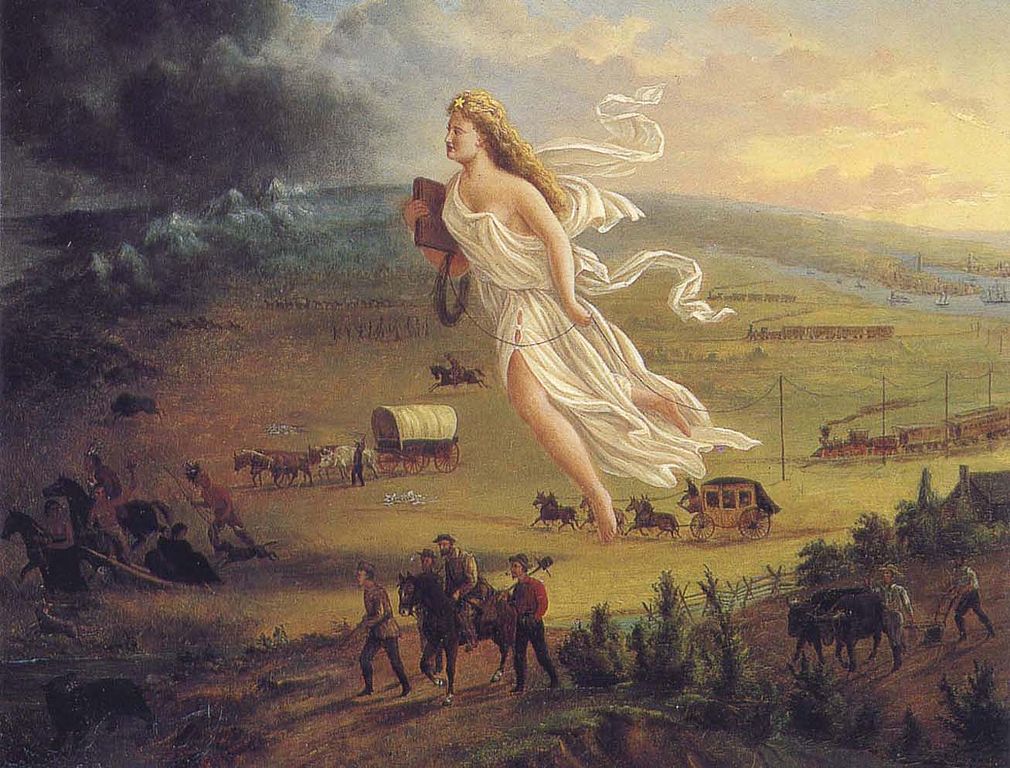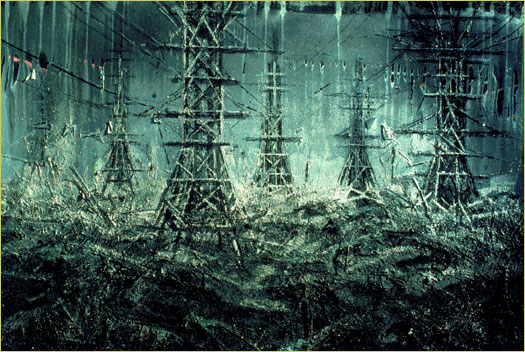Part 1 of 1: Read the passages below and answer questions 1-4 by selecting the appropriate answer.
Passage 1 Foraging near the hut that he built with his own hands, cultivating beans whose properties provided him with opportunities for speculation, gazing into the depths of the local pond, Henry David Thoreau to epitomize a long- standing American worship of nature. And so he was read by generations of students, whose teachers assigned Walden (1854), which recounts his experiment in living in solitary harmony with nature, as an illustration of the intensity with which Americans protested the intrusion into pastoral harmony of the forces of industrialization and urbanization. In this sense, Walden is revered as a text of regret, a lament for a world soon to pass out of existence.
Passage 2 Although Thoreau, in Walden, was sometimes ambivalent about the mechanization that he saw around him, at other times he was downright enthusiastic, as in his response to the railroad: “When I hear the iron horse make the hills echo with his snort like thunder, shaking the earth with his feet, and breathing fire and smoke from his nostrils, … it seems as if the earth had got a race now worthy to inhabit it” At Walden Pond, civilization and industrialization no longer seemed threatening. Providing a full record of Thoreau’s purposeful energy, Walden demonstrates that the power unleashed by the machine is not that different from the power required to transform the wilderness into a productive garden.
- The author of Passage 2 and the “teachers” mentioned in Passage 1, would probably disagree regarding which of the following about Walden?
- The extent to which Walden presents nature as being threatened
- The extent to which Walden successfully recounts Thoreau’s experiments in solitary living
- The extent to which Walden has been considered an important work of literature
- Whether Walden recognizes the spread of industrialization and urbanization
- Whether the power of the machine was a topic central to Walden
- Passage 1 suggests that Thoreau would most likely agree that the “power unleashed by the machine” (Passage 2) was
- Kept in check by comparable forces in nature
- Largely destructive of nature’s tranquility
- Exaggerated by those who did not seek out nature
- Necessary to transform nature into something productive
- Less threatening to one who lived close to nature
- The author of Passage 1 would most likely argue that the enthusiasm, referred to in the first sentence of Passage 2, is…
- Supportive of the idea that Walden expresses regret about industrialization
- A response that would have resonated with nineteenth-century Americans
- A characteristic of Thoreau’s that is often emphasized by teachers
- An attitude that derives from Thoreau’s experiment in solitary living
- Atypical of Thoreau’s perceived attitude toward mechanization
- The author of Passage 1 would probably agree with which of the following statements about the interpretation of Walden offered in Passage 2?
- It exaggerates the destructive power of the machine.
- It is overly influenced by the long-standing American worship of nature.
- It is not representative of the way Walden is taught in schools.
- It overlooks Thoreau’s enthusiasm in Walden for the railroad
- It is more in accord with the way Walden was generally understood in Thoreau’s time than it is currently.
ENRICHMENT SET
Part 1 of 2: Read the summary of American industrialization in the 19th and early 20th centuries. Select one item, fact or idea from the reading and create a visual representation of your emotions, impressions or opinions. You will not be marked down for your lack of artistic ability but you will gain points for visuals that effectively convey your ideas and or beliefs. Samples can be found below the reading.
Part 2 of 2: Write a paragraph (6-8 sentences) evaluating your reaction to the topic you chose. Is your reaction negative or positive? Why? Is it an overreaction or appropriate? Why does this particular topic effect you? etc
THE SPREAD OF INDUSTRIALIZATION IN AMERICA
The First Industrial Revolution lasted from the early 19th century to the late 19th century and was vital to the economic development of the United States. Arriving in America through the efforts of individual entrepreneurs like Samuel Slater and Francis Cabot Lowell, Industrialization’s spread in America was similar to that of Britain. Textiles, as in Britain, were the first area to be industrialized. Mills were built in New England to harvest the numerous fast flowing rivers. These rivers powered the early mills in America before the widespread use of the steam engine. To ensure the steady flow of materials into these factories America industrialized in other areas as well. In 1794, Eli Whitney invented the Cotton Gin which separated cotton fibers from the seeds making the harvesting of cotton more economically advantageous.
While intermittent at first, American Industrialization progressed rapidly during and after the war of 1812. This industrialization was driven by the need to cloth, feed and communicate with a growing population. Cyrus McCormick created the reaper which allowed quicker and cheaper harvesting of grain. John Deere created the first steel plow in 1837 helping speed up farming across the Midwest. In 1844, Samuel F. B. Morse created the telegraph and by 1860, this network ranged throughout the eastern coast to the Mississippi. By the late-19th century the United States had steamboats patrolling its major rivers, railways connecting its cities and national roads stitching the nation together.
The “second industrial revolution,” which took place roughly between 1870 and 1920, brought many social changes to the United States, including the mass production of consumer goods; large-scale migration from all parts of the world; and patterns of social change that reshaped workplace, family, and gender roles. Mass-produced goods rose in quantity and variety, and became cheaper to buy. To sell these goods, entrepreneurs developed vast communication and transportation networks that led to the creation of a nationwide market. The government supported these developments by making grants of land to railroad entrepreneurs and by legislating protective tariffs (a tax on foreign, imported goods).
Often recruited by employers, a labor force eager for economic opportunity migrated to cities from rural (countryside) areas of the United States, and from Asia, Latin America, and Europe. Millions of immigrants from China, Mexico, Canada, southern and Eastern Europe, and Scandinavia entered all regions of the country, with the majority settling in the Northeast. Many of these immigrants hoped to obtain land, but—arriving penniless—often took the first industrial jobs they could find. At first, these workers might earn enough to support families left behind or bring the family members over to join them. When the economy slumped, however, business owners cut wages, increased work hours and responsibilities, or laid off workers. In response, workers formed unions to demand improved working conditions. Local and national strikes became increasingly frequent—even violent.
Paving America
Janet Culbertson
American Progress
John Gast
Marching Giants
Janet Culbertson


